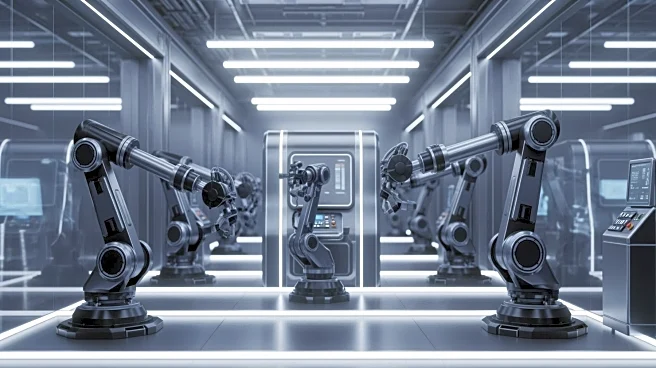What's Happening?
Holman Robotics, a new division of Holman, has been launched to provide an end-to-end robotic management solution aimed at simplifying the deployment of industrial automation. The company, based in Mount
Laurel, N.J., offers a unified model that integrates system design, flexible financing, and lifecycle asset management. This approach is designed to overcome barriers such as high upfront costs and technical complexities that often hinder the adoption of robotic automation. Holman Robotics plans to collaborate with innovators in the robotics sector to deliver tailored solutions that align with business goals and operational workflows.
Why It's Important?
The introduction of Holman Robotics' comprehensive services is significant for businesses looking to enhance operational efficiency and reduce expenses through automation. By offering a one-stop shop for robotics hardware, data integration, and ongoing support, Holman aims to facilitate faster launches and smarter scaling of automation projects. This initiative is poised to transform how companies manage their robotic assets, potentially leading to increased adoption of automation technologies across various industries, thereby driving innovation and competitiveness.
What's Next?
Holman Robotics is set to partner with key players in the robotics industry to expand its offerings and refine its management solutions. As businesses increasingly seek to integrate automation into their operations, Holman's model could serve as a blueprint for others in the sector. The company's focus on reducing complexity and maximizing investment value positions it as a leader in the automation management space, with potential implications for industry standards and practices.
Beyond the Headlines
The launch of Holman Robotics underscores the growing importance of automation in modern business operations. As companies navigate the challenges of integrating new technologies, the need for comprehensive management solutions becomes more apparent. Holman's approach highlights the potential for automation to drive efficiency and innovation, while also addressing the complexities associated with managing diverse robotic systems.











